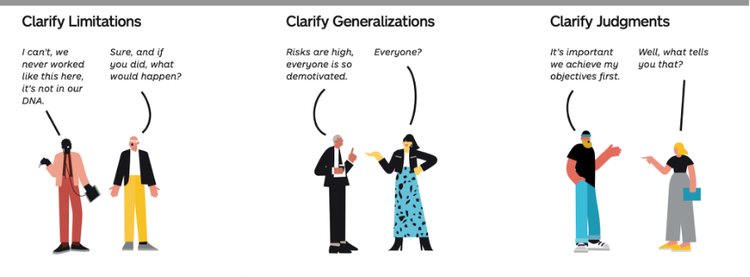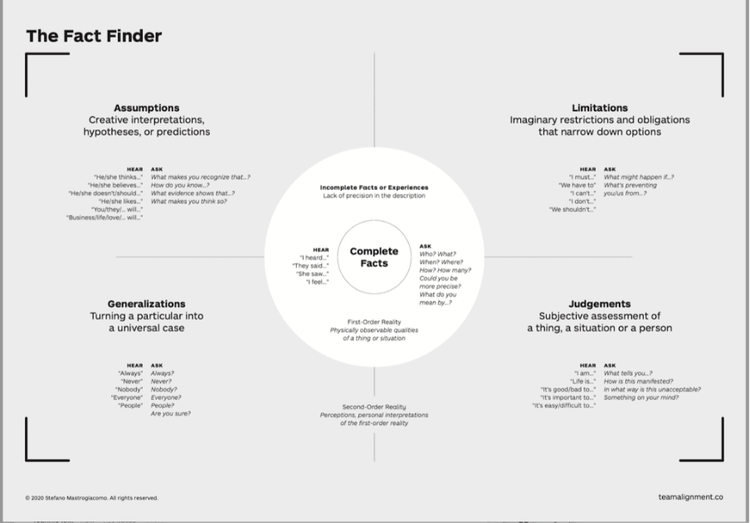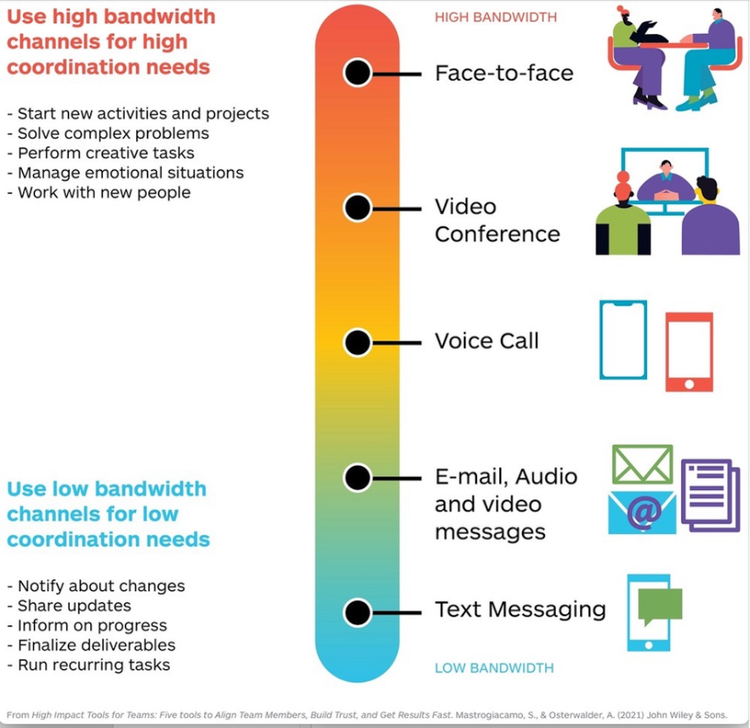Stefano Mastrogiacomo is a project management practitioner and academic with 20 years of experience, and the author of High-Impact Tools for Teams. Why did he create high-impact tools for teams? What communication challenges are most common in teams? When to use what communication channel? And, what are the main differences between startups and big organizations regarding communication?
Alignment and trust are key to project management and innovation
There are many powerful tools (i.e. methods and templates) to help teams manage projects and innovate, Stefano indicates. However, a few years of research on IT project failure made him realize the (huge) impact of alignment and trust on team success, two factors of psychological nature and related to communication.
Both topics were usually taken for granted or treated implicitly in the project management frameworks he was familiar with. So, he started designing and experimenting with a series of simple “plug-ins” that do just that: increase alignment among team members and build trust. The rapid adoption by his teams and later other teams surprised him.
To date, Stefano has seen great teamwork enabled by the tools in companies like PwC, Breitling, Cartier, and the World Economic Forum. To illustrate, based on the Team Alignment Map, teams can better align; and as a result, improve planning, reduce risks and better collaborate with others. Currently, he examines how diplomats and hostage negotiators operate to design new tools to prevent conflict escalation.
“It is important to get clarity on exactly who is responsible for each part of the team's key activities and projects. The tools are complemented by four methods that help teams build trust and increase psychological safety. This allows each team member to confidently share ideas and concerns about the obstacles the team may face.”
Stefano Mastrogiacomo | Program Management Consultant & Author High-Impact Tools for Teams

Beat common team communication traps with the fact finder
Next to the importance of alignment and trust, Stefano describes five common “communication traps” you should be aware of for successful teamwork.
Imagine you are at a local fast-food restaurant, and you see someone eating three burgers. The next day, you can report the story to a friend in a factual way: “Yesterday I saw someone eating three burgers at the local fast-food restaurant”. You can also easily fall into one of these 5 traps (we all do it to various degrees):
● Unclear facts or experiences: if you say “Yesterday I saw someone eating”, key information is missing in your description.
● Generalizations: if you say “People eat a lot”, then you turn a particular case into a universal law.
● Assumptions: if you report “Yesterday I saw someone who had not eaten for two weeks”, that is your creative interpretation of the experience or situation.
● Limitations: if you tell your friend “Burgers must be banned!”, you inferred some imaginary rules and obligations from the situation.
● Judgements: finally, you could say “Eating three burgers is bad!”, which would be your individual evaluation of the situation or the person.
These are traps because they distance the listener from what happened: the facts. Stefano presents a tool coined the "Fact Finder", that helps escape from these traps.
“The Fact Finder brings you back to the essence: by asking minimalistic questions you bring the conversation back to what really happened.”
Stefano Mastrogiacomo | Program Management Consultant & Author High-Impact Tools for Teams


High-Impact Tools for Teams - Stefano Mastrogiacomo & Alexander Osterwalder

High-Impact Tools for Teams - Stefano Mastrogiacomo & Alexander Osterwalder
Face-to-face versus online team communication: what works best?
Furthermore, to benefit from both (onsite and remote work), Stefano indicates teams must be “smart" at selecting their communication channels, or the way they meet and coordinate.
Complex tasks require a higher degree of team coordination. More information exchange, more questions and answers, more alignment on who does what, when, with whom, and so on. Getting all this information through is easier with high-bandwidth channels like face-to-face and videoconferencing. These rich channels should be privileged when solving complex problems.
Low complexity tasks require less coordination and it’s smart to use channels with lower bandwidth. Messaging apps and emails do the job perfectly and offer the great advantage of time flexibility. Team members can organize their day freely and work without being interrupted for greater personal efficiency. It's a real waste of time, productivity, and bandwidth to call a meeting for sharing minor updates or notifying about changes.
“It's important to adhere to “smart channel selection”. Use high-bandwidth channels, such as face-to-face and videoconferencing, for solving complex problems. And low bandwidth channels like email and text messaging for simple ones.”
Stefano Mastrogiacomo | Program Management Consultant & Author High-Impact Tools for Teams


High-Impact Tools for Teams - Stefano Mastrogiacomo & Alexander Osterwalder
Communication in big organizations versus startups
To oversimplify, in a startup communication tends to be more direct. That brings clarity and efficiency to the table but can also be perceived as more offending. In a large organization, there is more indirect speech, more politeness, and “niceties” to avoid offending others but that makes communication very confusing and ineffective sometimes.
“The difference is essentially due to the size of the company, the corporate culture that emerges over time, and the longevity of the relationships. Remember that all the big organizations were startups when they were created. It's a cycle.”
Stefano Mastrogiacomo | Program Management Consultant & Author High-Impact Tools for Teams

Apply for the next AMS Startup Booster edition
Currently, Stefano examines how diplomats and hostage negotiators operate to design new tools to prevent conflict escalation. A vast topic, that requires quite some investigation – stay tuned. Next to this, he shares his expertise on the importance of trust and alignment in new business development during the upcoming Startup Booster program.
Would you like to learn more from experts like Stefano to boost your business? In the last couple of years, AMS Institute has been involved in helping several startups. The AMS Startup Booster is an early-stage startup incubator created for students, researchers, and young entrepreneurs who are passionate about developing solutions for urban challenges.
Lasting over 4 months, the next AMS Startup booster edition starts at the end of September and runs until December. The program consists of key components that help prepare for a successful start-up:
The program is offered for free. Ready to turn your idea into a business? The call for applications is open from August 1st till September 30th. Apply here to join the next run of the program.
